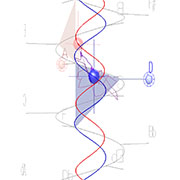Find out more about how The Lecture List works.
Coronavirus situation updateOur lecture organisers may or may not have had time to update their events with cancellation notices. Clearly social gatherings are to be avoided and that includes lectures. STAY AT HOME FOLKS, PLEASE. |
Find out what you can do to keep The Lecture List online
|

The Inaugural Lecture of Professor Elaine Chew
What makes music, really good music, difficult to model? Can structures that shape our understanding of music be gleaned from sonic information? Can music knowledge be formalized and represented mathematically? We shall consider these questions in the context of performance, the primary means by which music is communicated to the listener.
An important function of performance is the use of prosodic variation to communicate an understanding of music structure, broadly defined as the product of musical sense making. Music structure is more than simply sonata form or ABA structure. It refers to all manner of musical coherence as generated by surface features and deeper ones, musical entities and boundaries, movements and arrivals. Multiple plausible structural solutions almost always exist. The structure experienced is subject to the vicissitudes of individual perception, that of the performer and that of the listener. The performance thus shapes the listener's experience of the music and, in particular, the listener's perception of the music's structure and meaning.
What then are the hallmarks of a successful performance? While many have likened music composition to mathematical proof because of its pursuit of "unexpectedness, combined with inevitability and economy" (Hardy 1940), few have openly acknowledged the premium that performance places on these same qualities. We shall consider the problem of musical sense making, and how successful designations of structural solutions—from local weighting of anchor tones to melodic segmentations to placements of tipping points—manifest properties of surprise, inevitability, and parsimony.
The lecture will include performances at the piano and visualisations of music structure.
The lecture will be followed by a free drinks reception.
Speaker(s): |
Professor Elaine Chew | talks |
|
|
Date and Time: |
11 October 2016 at 7:00 pm |
Duration: | 1 hour |
|
|
Venue: |
Arts Two Lecture Theatre |
Organised by: |
Events Office, Queen Mary University of London |
|
|
Tickets: |
Free |
Available from: |
https://musicmathematics.eventbrite.co.uk |
Additional Information: |
For further information contact: b.prescott@qmul.ac.uk or visit http://www.qmul.ac.uk/events/meetprofessors/ |
Register to tell a friend about this lecture.
If you would like to comment about this lecture, please register here.
Any ad revenue is entirely reinvested into the Lecture List's operating fund